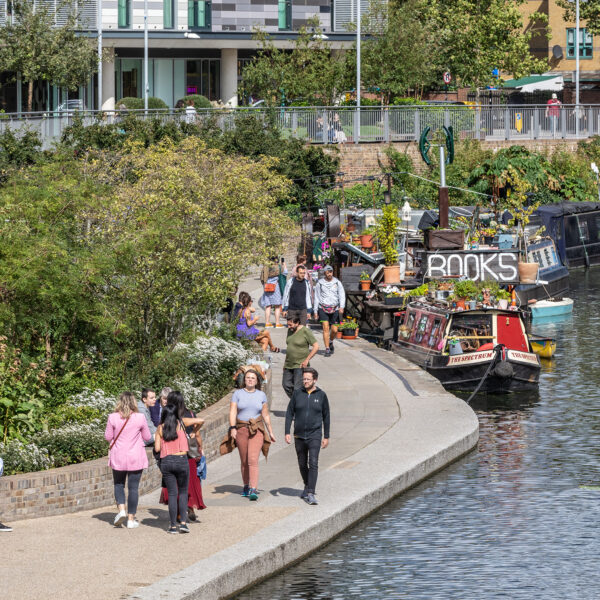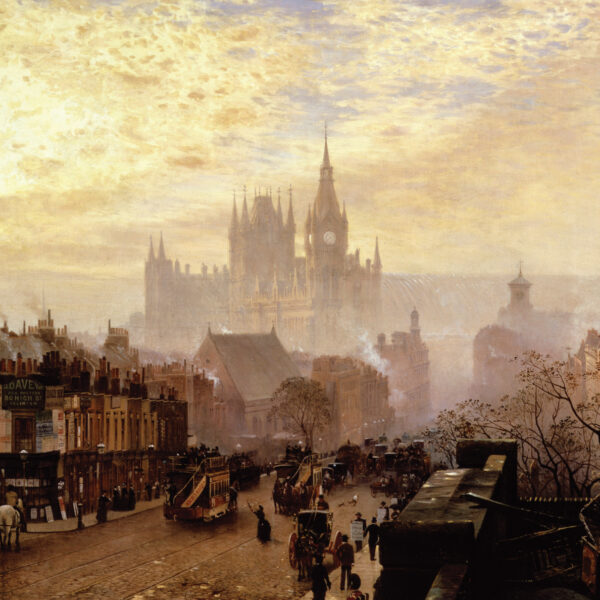In its heyday, the canal was strictly for business only. Today, this charming waterway can be enjoyed by everyone
King’s Cross has been a place of trade since Roman times. And from 1820 until the 1960s, Regent’s Canal played an important part in this trade. It linked King’s Cross to the major industrial cities in the North of England. And for over 140 years the Canal brought coal, goods and building materials to London.
Created by the capital’s supreme masterplanner
The force behind Regent’s Canal, and indeed much of Regency London was John Nash. This prolific architect also designed Buckingham Palace, Regent Street and Marble Arch. Regent’s Canal takes its name from the Prince Regent, son of King George III. Nash worked for the Prince Regent for much of his career.
After a few problems with funding and some construction issues, the canal was opened to great fanfare in 1820. Initially a commercial failure, by the mid 19th century the canal had become busy and profitable. It carried timber, building materials and coal to King’s Cross Station from the industrial north. It also brought fruit to marmalade makers, beer to bottlers and grain to a flour mill where Kings Place now stands. It even carried ice from Norwegian glaciers to Carlo Gatti’s ice house – now home to the London Canal Museum.
From coal and cargo to studies and shopping
The King’s Cross Coal Drops were used by the merchant and coal mine owner, Samuel Plimsoll who built the viaduct. More famous for the Plimsoll line on the side of ships, Plimsoll’s coal powered trains and heated the homes of London.
To unload the barges, the Great Northern Railway Company built two canal basins. Two short branch canals led from the basins underneath the six-storey Granary Building where goods were offloaded. Other canal branches ended at the transit sheds on either side of the Granary, where cargo could be taken directly onto horse drawn wagons for distribution.
Restored, repurposed and reanimated, those buildings remain part of King’s Cross’s character and texture. The Granary complex is today a creative warehouse, home to the world famous Central Saint Martins while the cobbled streets and brick arches of Coal Drops Yard now house boutique shops and restaurants.
The end of an era…
The harsh winter of 1962-3 saw Regent’s Canal freeze so hard that no cargo could move on it for weeks. By the time the thaw came, most of the freight traffic had been transferred to road, never to return. By the late 1960’s commercial traffic had all but vanished. By that time the canal had been carrying timber, coal, building materials and foodstuff to London for over 140 years.
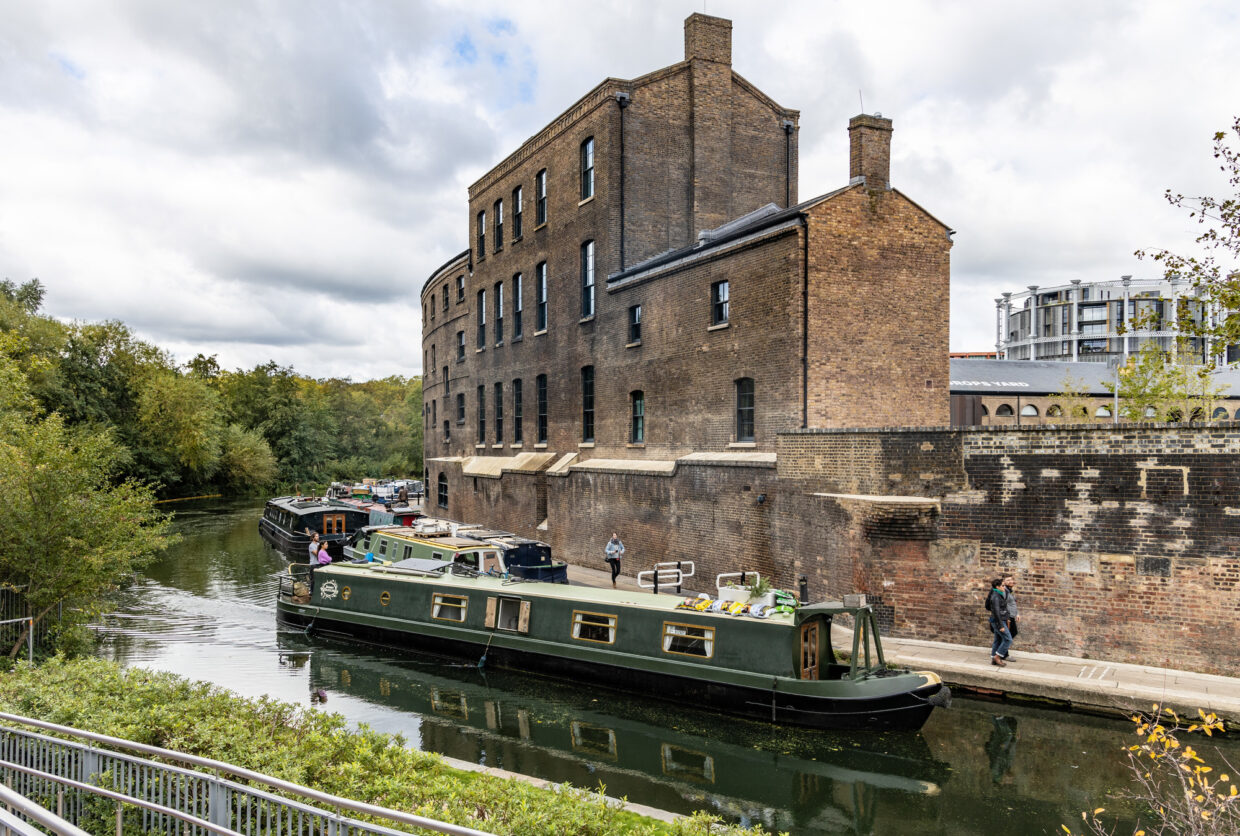
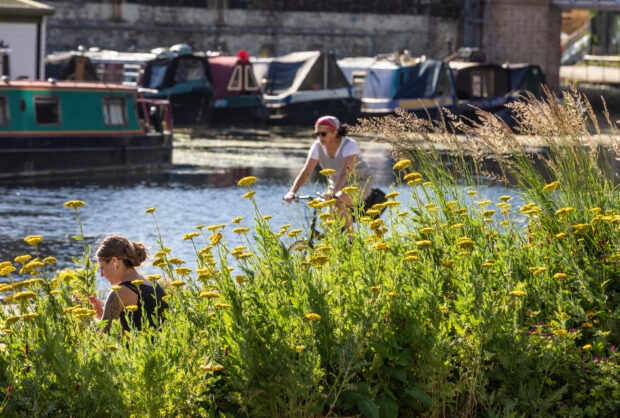
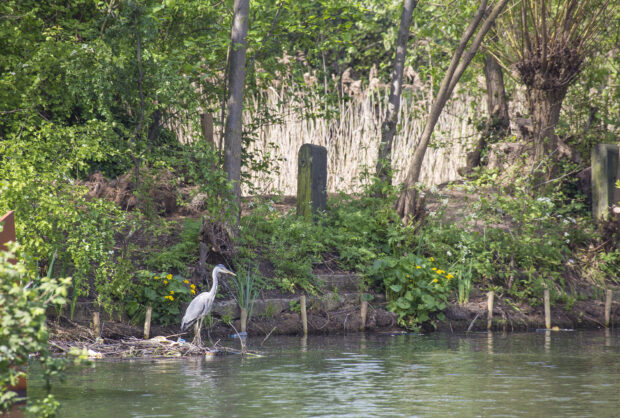
…and the start of a new one
The canal has since become an important leisure amenity. The towpath is open to the public and is well used by both cyclists and walkers. Boat trips are popular, especially between Camden and Little Venice.
At King’s Cross, a one-mile walk east along the tow path takes you to buzzing Islington. Walk a mile west and you’re at popular Camden Lock.
Now a destination in itself rather than a means of transporting goods, the next phase of the canal’s history is just beginning.
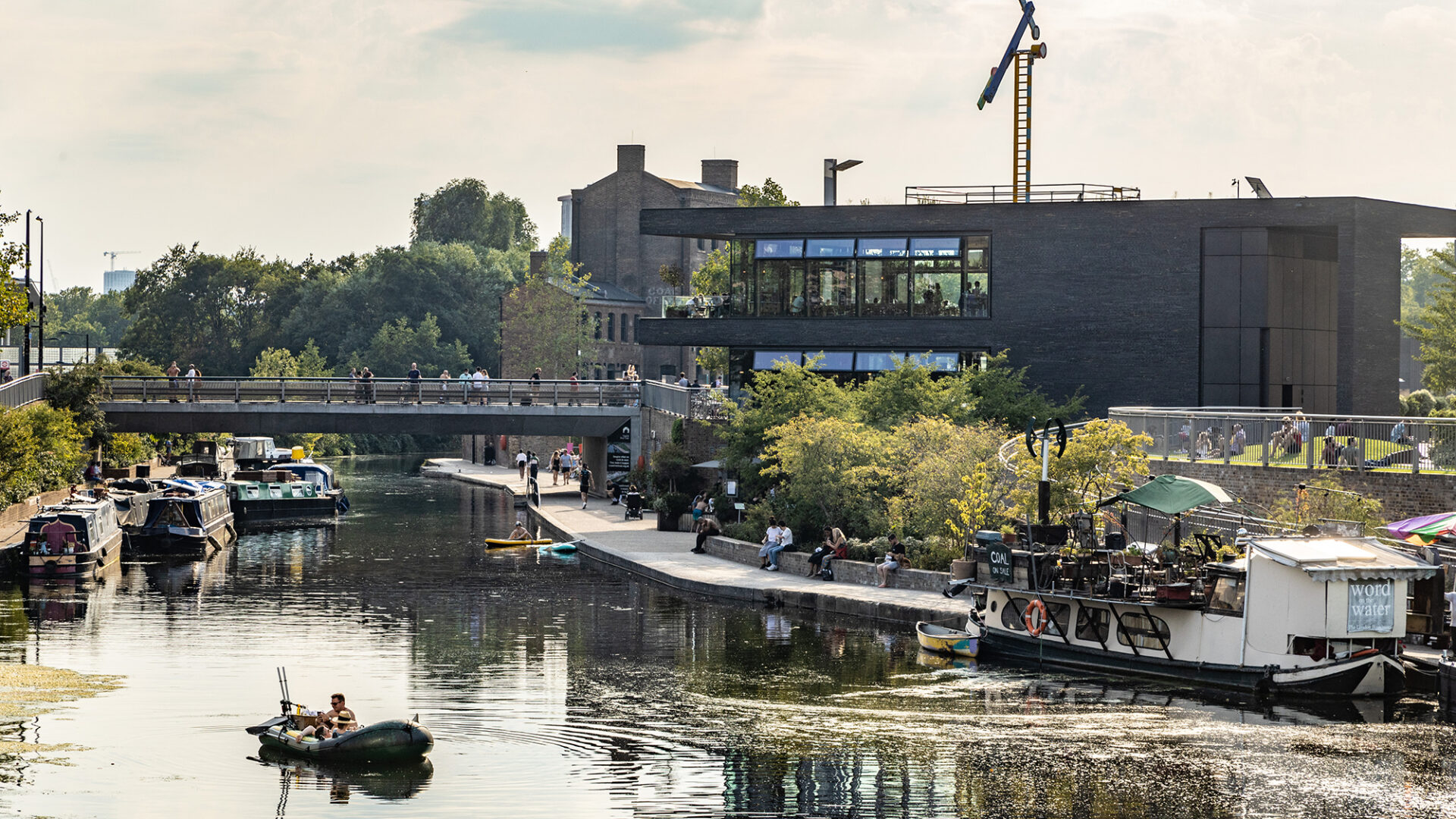
On Saturday evening, in that lovely light and heat, as the sun set, it seemed an enchanted corner.
David Sexton, Evening Standard

